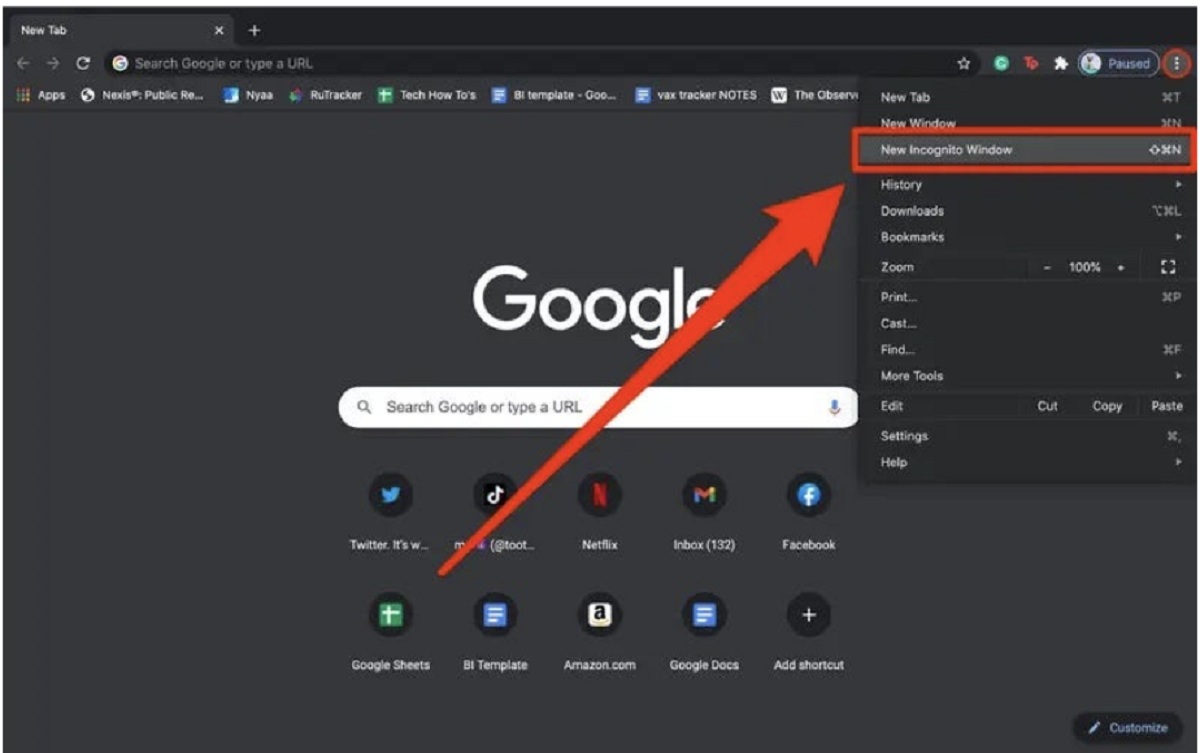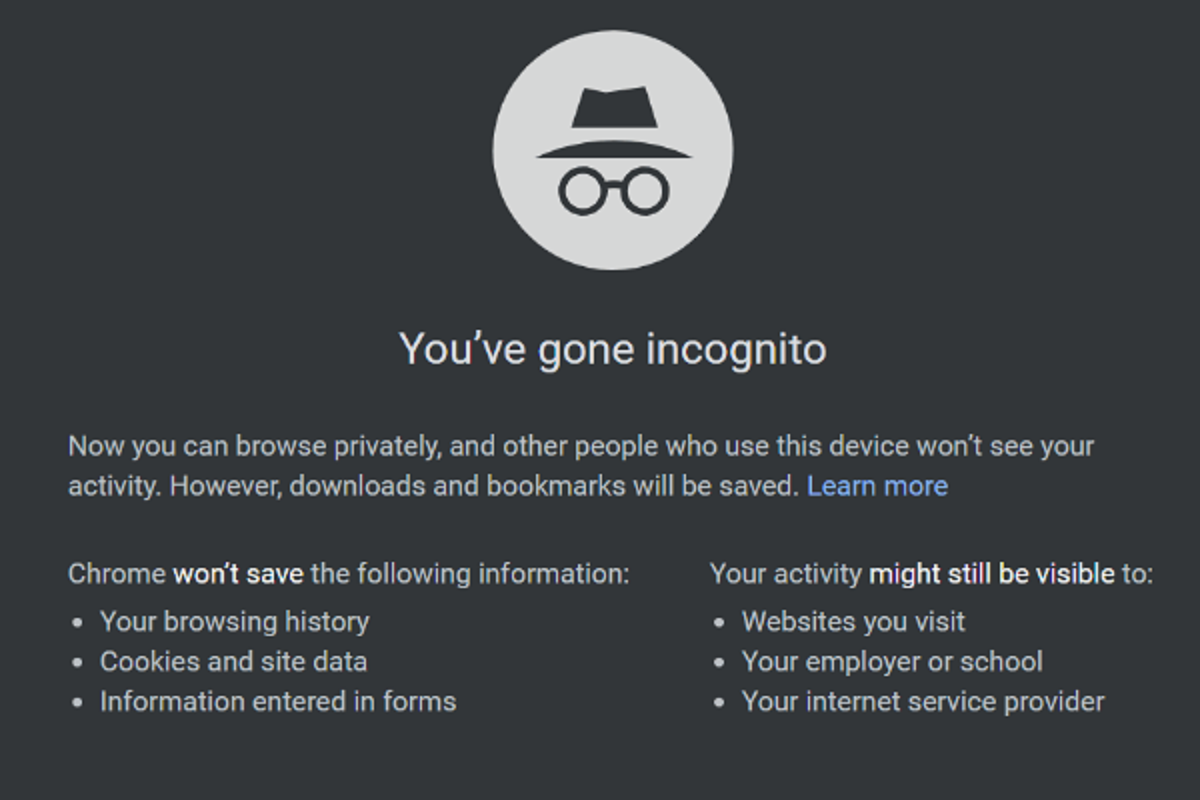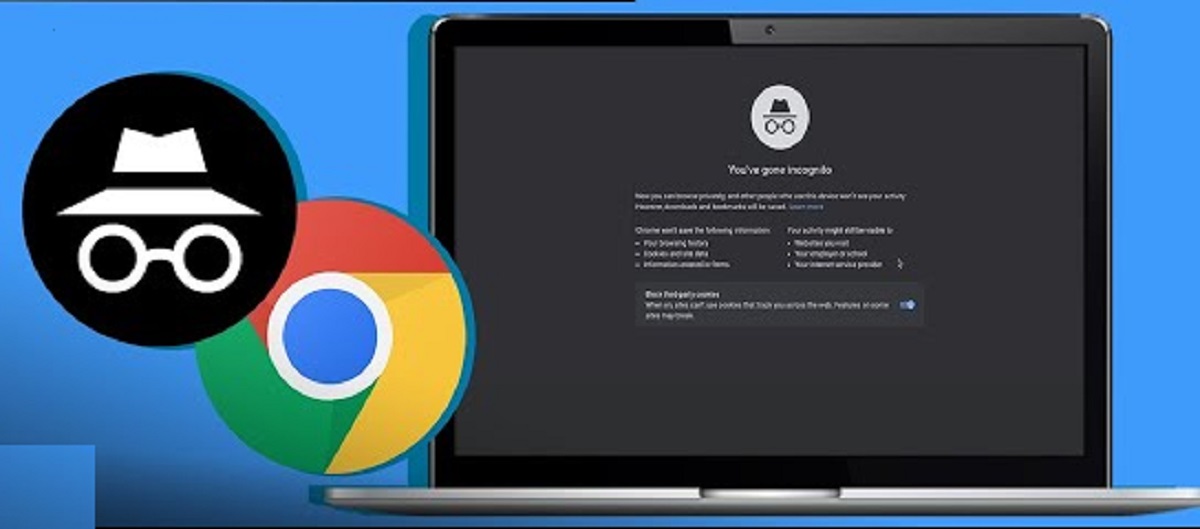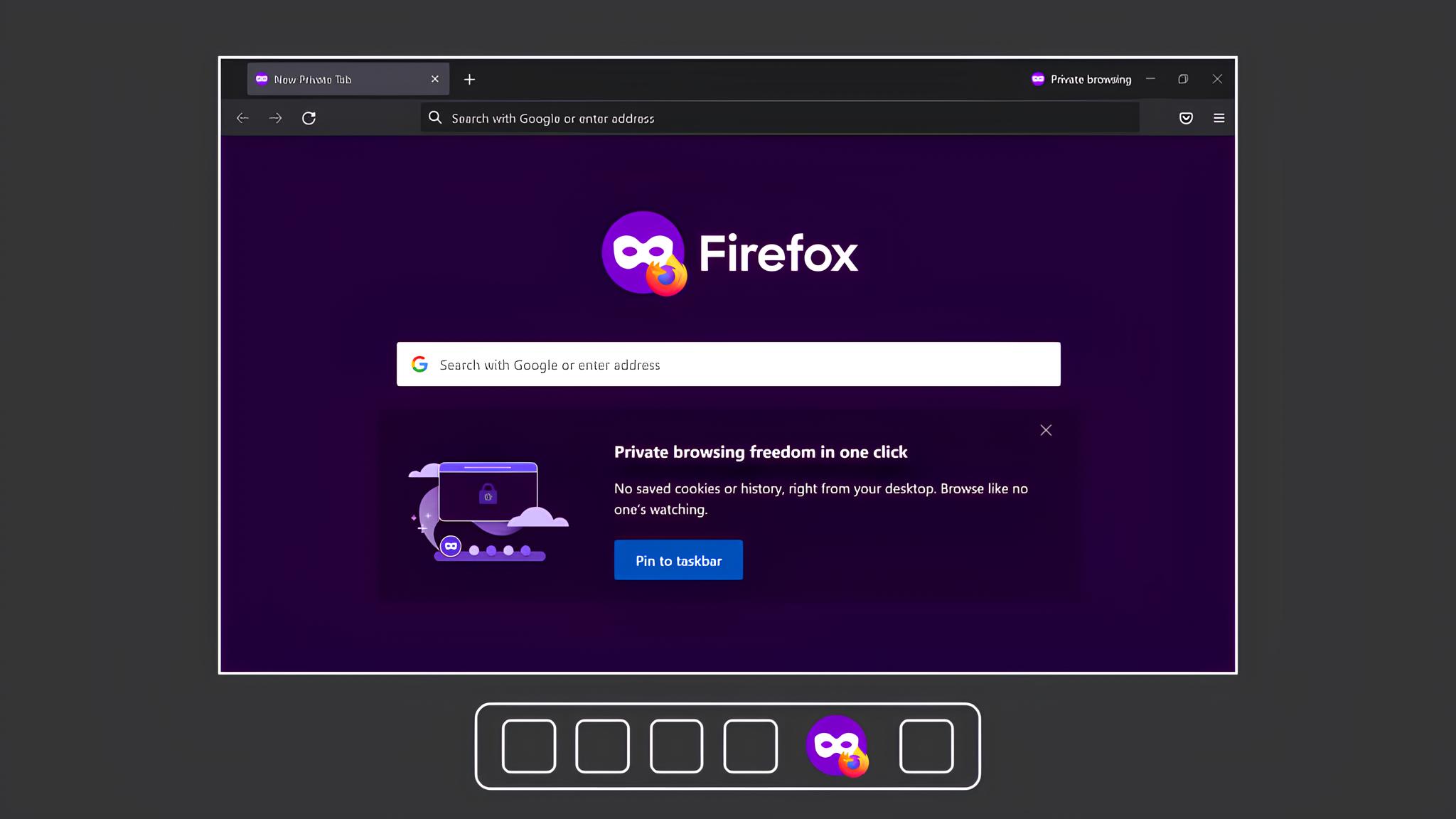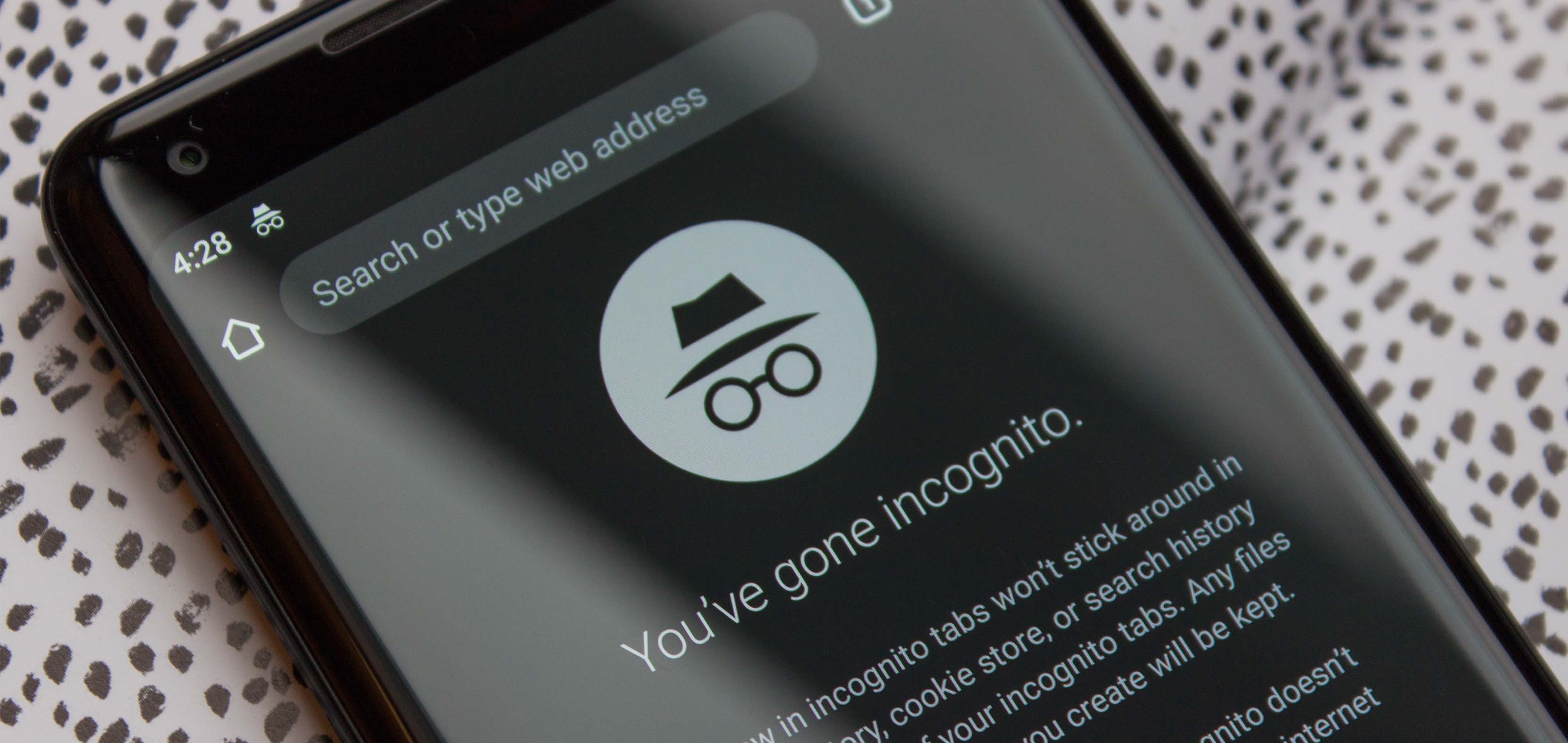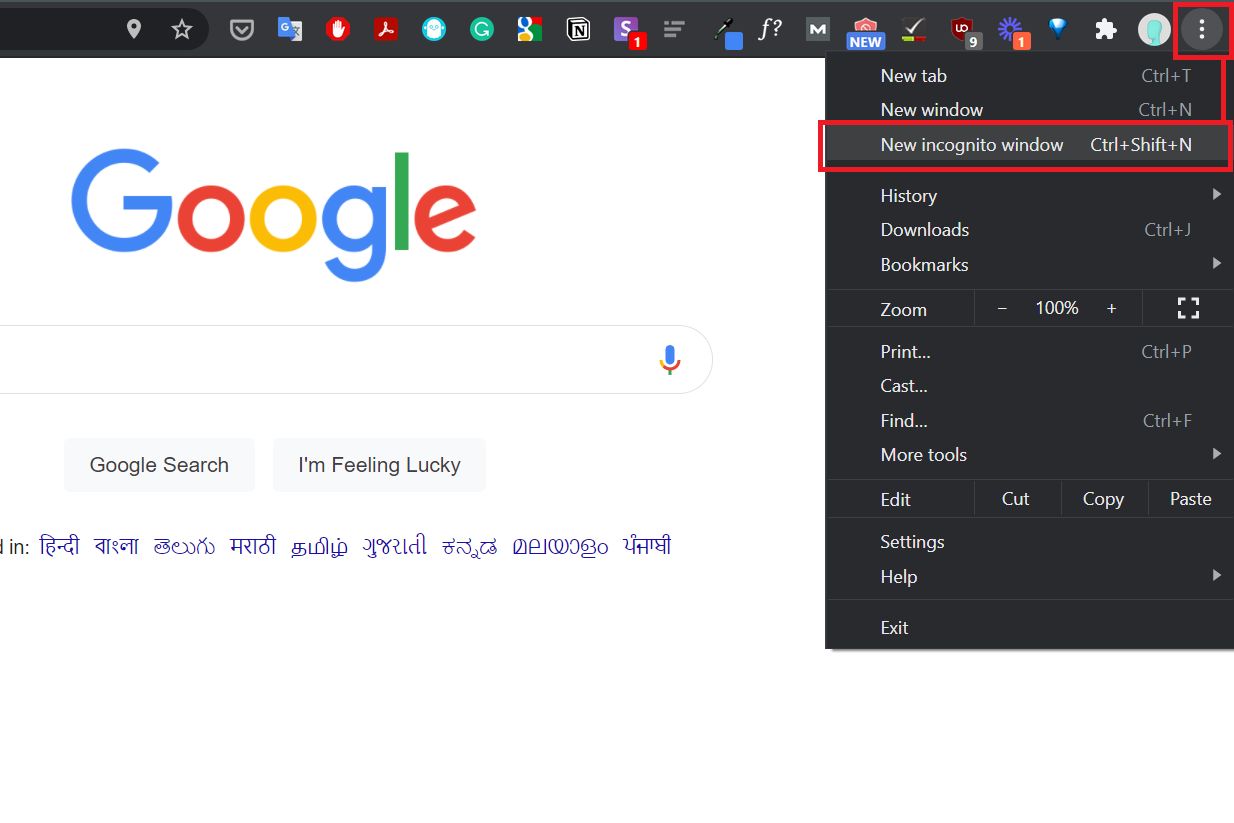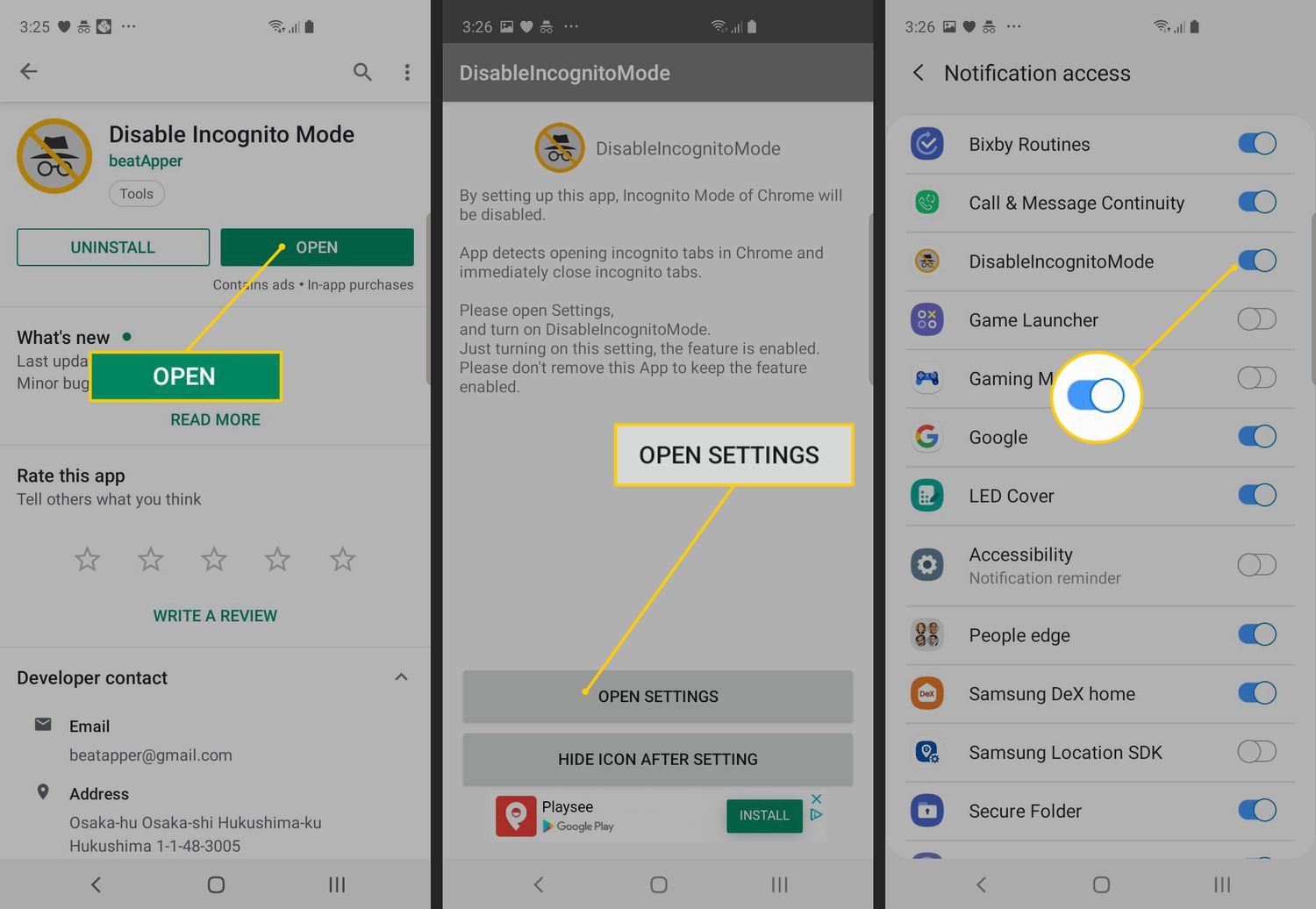What is Incognito Mode?
Incognito mode, also known as private browsing, is a feature offered by most modern web browsers that allows users to browse the web without leaving any traces of their online activities. When you enable incognito mode, the browser temporarily suspends certain features that record your browsing history, cookies, downloads, and form data. This allows you to maintain a certain level of privacy and prevents others who may have access to the same device from seeing your online activities.
While incognito mode provides some privacy benefits, it’s important to note that it is not a foolproof method of complete anonymity. It primarily focuses on hiding your browsing history from others who might use the same computer or device. It does not shield your online activities from internet service providers, websites you visit, or any malicious software that may be present on your device.
Incognito mode is designed to be a convenient tool for certain situations. For example, if you want to search for a surprise gift for someone or access sensitive information on a shared computer, using incognito mode can help protect your privacy. It can also be useful when you want to sign in to multiple accounts simultaneously on the same website.
It’s worth noting that while using incognito mode, your internet service provider and websites can still track your IP address, which can reveal your approximate location. Additionally, any bookmarks you save or files you download while in incognito mode will still be visible after you exit it. Therefore, it’s important to consider the limitations of incognito mode and exercise caution when browsing sensitive or confidential information.
The way to enable and use incognito mode may vary slightly depending on the browser you are using. In the following sections, we will explore how to enable incognito mode in popular web browsers such as Chrome, Firefox, Safari, Edge, and Opera.
How to Enable Incognito Mode in Different Browsers
Enabling incognito mode in different web browsers is a straightforward process. Here’s a step-by-step guide on how to enable incognito mode in popular web browsers:
- Chrome: To enable incognito mode in Chrome, click on the three-dot menu icon in the top-right corner of the browser window and select “New Incognito Window”. You can also use the keyboard shortcut “Ctrl+Shift+N”.
- Firefox: In Firefox, click on the three-line menu icon in the top-right corner and choose “New Private Window”. Alternatively, you can use the keyboard shortcut “Ctrl+Shift+P”.
- Safari: To enable private browsing in Safari, click on the “File” menu in the top-left corner and select “New Private Window”. You can also use the keyboard shortcut “Shift+Command+N”.
- Edge: In Microsoft Edge, click on the three-dot menu icon in the top-right corner and select “New InPrivate Window”. You can also use the keyboard shortcut “Ctrl+Shift+P”.
- Opera: To enable private browsing in Opera, click on the “Menu” button in the top-left corner, hover over “New Private Window”, and then select “New Private Window”. You can also use the keyboard shortcut “Ctrl+Shift+N”.
Once you have enabled incognito mode, a new browser window will open with a visual indicator that you are browsing privately. You can now browse the web without leaving any traces of your online activities.
It’s important to note that enabling incognito mode does not affect your browsing experience in terms of accessing websites or using browser features. It simply suspends the storage of certain data, providing you with a level of privacy for your browsing session.
Remember that using incognito mode does not make you completely anonymous online. Other entities, such as your internet service provider and the websites you visit, can still track your activities. It’s essential to use additional privacy measures like VPNs if you require a higher level of anonymity.
Now that you know how to enable incognito mode in various web browsers, let’s explore how to use it effectively in different scenarios.
How to Use Incognito Mode in Chrome
Incognito mode in Google Chrome offers a private browsing experience that allows you to browse the web without leaving traces on your computer. Here’s how you can use incognito mode in Chrome:
- To open an incognito window, click on the three-dot menu icon in the top-right corner of the browser window.
- From the dropdown menu, select “New Incognito Window”. You can also use the keyboard shortcut “Ctrl+Shift+N”.
- A new incognito window will open, indicated by a dark gray icon with a hat and sunglasses in the top-left corner.
- You can now browse privately in this window. Any websites you visit or files you download will not be saved to your browsing history, cookies, or search history.
- Extensions that you have installed in regular Chrome mode may still be active in incognito mode. However, by default, Chrome disables extensions in incognito mode.
- If you want to allow specific extensions in incognito mode, follow these steps:
- Go to chrome://extensions/ in the incognito window.
- Locate the extension you want to enable in incognito mode and click on the “Details” button.
- In the extension settings, toggle the “Allow in incognito” option to enable the extension for incognito mode.
It’s important to note that incognito mode only applies to the specific incognito window that you have opened. If you open a new incognito window or a regular non-incognito window, they will not share the same browsing history or cookies.
Additionally, while incognito mode can hide your browsing activity from other users of the same device, it does not make you completely anonymous online. Your internet service provider, websites you visit, and any additional tracking methods can still gather information about your online activities.
By using incognito mode in Chrome, you can maintain a level of privacy while browsing the web and protect your personal information from being stored. Remember, however, that it’s crucial to exercise caution and take additional privacy measures if needed.
How to Use Incognito Mode in Firefox
Firefox offers a private browsing feature called “Private Window” that allows you to browse the internet without saving your browsing history, cookies, or temporary files. Here’s how you can use incognito mode in Firefox:
- Click on the three-line menu icon in the top-right corner of the Firefox browser window.
- From the dropdown menu, select “New Private Window”. You can also use the keyboard shortcut “Ctrl+Shift+P”.
- A new private window will open, indicated by the purple mask icon in the top-right corner.
- You can now browse privately in this window. Any websites you visit or files you download will not be saved to your browsing history, cookies, or search history.
- Extensions and add-ons that you have installed in regular Firefox mode may still be active in private browsing mode. However, some extensions may automatically disable or limit their functionality in private browsing mode.
- If you want to control how extensions behave in private browsing mode, follow these steps:
- Go to the menu icon and select “Add-ons”.
- In the Add-ons Manager, select the “Extensions” tab.
- Find the extension you want to configure and click on the “More options” button (three dots).
- In the options menu, choose “Manage Extension” and then select “Allow in Private Windows” to enable the extension for private browsing.
Remember that private browsing in Firefox only applies to the specific private window that you have opened. If you open a new private window or a regular non-private window, they will not share the same browsing history or cookies.
While private browsing can help protect your privacy from other users of the same device, it does not guarantee complete anonymity. Your internet service provider, websites you visit, and any additional tracking methods can still gather information about your online activities.
By using private browsing mode in Firefox, you can ensure a certain level of privacy while browsing the web and prevent your browsing data from being stored. However, it’s important to remain vigilant and take additional security measures if necessary.
How to Use Incognito Mode in Safari
Safari, the default web browser for Apple devices, offers a private browsing feature known as “Private Window.” Using incognito mode in Safari allows you to browse the internet without leaving traces of your online activities. Here’s how you can use incognito mode in Safari:
- Open Safari on your device.
- Click on the “File” menu in the top-left corner of the screen.
- From the dropdown menu, select “New Private Window.” You can also use the keyboard shortcut “Shift+Command+N”.
- A new private window will open, indicated by a dark color theme and a shield icon in the address bar.
- You can now browse privately in this window. Any websites you visit or files you download will not be saved to your browsing history, cookies, or search history.
- Safari also disables auto-fill for forms and blocks certain websites from tracking your activities when you are in private browsing mode.
- If you want to use specific extensions while in private browsing mode, follow these steps:
- Go to the “Safari” menu and select “Preferences”.
- In the Preferences window, click on the “Extensions” tab.
- Find the extension you want to enable for private browsing and check the box that says “Allow in Private Browsing”.
It’s important to remember that enabling private browsing in Safari only applies to the specific private window that you have opened. If you open a new private window or a regular non-private window, they will not share the same browsing history or cookies.
While private browsing provides some level of privacy, it doesn’t guarantee complete anonymity. Your internet service provider and the websites you visit can still see your IP address and other identifying information. Private browsing also won’t protect you from other forms of tracking, such as cookies placed on your device by websites.
Using incognito mode in Safari can help protect your privacy and prevent your browsing data from being stored. However, it’s important to be cautious and take additional steps to enhance your online security and privacy as needed.
How to Use Incognito Mode in Edge
Microsoft Edge, the default web browser for Windows 10, offers an incognito mode called “InPrivate Browsing.” This feature allows you to browse the web without leaving traces of your online activities. Here’s how you can use incognito mode in Edge:
- Open Microsoft Edge on your computer.
- Click on the three-dot menu icon in the top-right corner of the browser window.
- From the dropdown menu, select “New InPrivate Window.” You can also use the keyboard shortcut “Ctrl+Shift+P”.
- A new InPrivate window will open, indicated by the blue mask icon in the top-right corner.
- You can now browse privately in this window. Any websites you visit or files you download will not be saved to your browsing history, cookies, or search history.
- Extensions and add-ons that you have installed in regular Edge mode may still be active in InPrivate mode. However, some extensions may automatically disable or limit their functionality in InPrivate mode.
- If you want to control how extensions behave in InPrivate mode, follow these steps:
- Click on the three-dot menu icon and select “Extensions”.
- In the Extension menu, find the extension you want to configure and click on the gear icon.
- Toggle the switch that says “Allow in InPrivate” to enable the extension for InPrivate mode.
It’s important to note that incognito mode in Edge only applies to the specific InPrivate window that you have opened. If you open a new InPrivate window or a regular non-InPrivate window, they will not share the same browsing history or cookies.
While InPrivate browsing can help protect your privacy from other users of the same device, it does not guarantee complete anonymity. Your internet service provider, websites you visit, and any additional tracking methods can still gather information about your online activities.
By using InPrivate mode in Edge, you can maintain a certain level of privacy while browsing the web and prevent your browsing data from being stored. However, it’s important to remain cautious and take additional security measures if required.
How to Use Incognito Mode in Opera
Opera, a popular web browser known for its speed and security features, offers an incognito mode called “Private Window.” This feature allows you to browse the web without leaving traces of your online activities. Here’s how you can use incognito mode in Opera:
- Open Opera on your computer.
- Click on the Opera menu button in the top-left corner of the browser window.
- In the dropdown menu, hover over “New Private Window”.
- From the submenu that appears, select “New Private Window”. You can also use the keyboard shortcut “Ctrl+Shift+N”.
- A new private window will open, indicated by the dark background and white mask icon in the top-right corner.
- You can now browse privately in this window. Any websites you visit or files you download will not be saved to your browsing history, cookies, or search history.
- Extensions and add-ons that you have installed in regular Opera mode may still be active in private browsing mode. However, some extensions may automatically disable or limit their functionality in private browsing mode.
- If you want to control how extensions behave in private browsing mode, follow these steps:
- In the private browsing window, click on the Opera menu button and select “Extensions”.
- Find the extension you want to configure and click on the “Details” button beside it.
- In the extension details page, toggle the switch that says “Allow in private mode” to enable the extension for private browsing.
It’s important to note that enabling private browsing in Opera only applies to the specific private window that you have opened. If you open a new private window or a regular non-private window, they will not share the same browsing history or cookies.
While private browsing can help protect your privacy from other users of the same device, it does not guarantee complete anonymity. Your internet service provider, websites you visit, and any additional tracking methods can still gather information about your online activities.
By using private browsing mode in Opera, you can maintain a certain level of privacy while browsing the web and prevent your browsing data from being stored. However, it’s important to remain cautious and take additional security measures if necessary.
Benefits of Using Incognito Mode
Incognito mode, also known as private browsing, offers several benefits that can enhance your browsing experience. Here are some of the key advantages of using incognito mode:
- Privacy: The primary benefit of using incognito mode is enhanced privacy. When you browse in incognito mode, your browsing history, cookies, and other temporary data are not saved. This means that others who may have access to your computer or device won’t be able to see your browsing activity.
- Security: Incognito mode can add an additional layer of security to your online activities. Since your browsing history and cookies are not stored, there is less chance of your personal information being exposed if your device is accessed by someone else.
- Multiple Account Management: Incognito mode allows you to sign in to multiple accounts on the same website simultaneously. This can be particularly useful if you have separate accounts for work and personal use, or if you manage different social media profiles.
- Avoiding Targeted Ads: When you browse in incognito mode, websites and advertisers have a harder time tracking your online behavior and preferences. This can result in fewer targeted ads following you across the internet.
- Bypassing Paywalls: Some websites limit free access to their content and require users to sign in or subscribe. By opening the website in incognito mode, you may be able to bypass the paywall and access the content without restrictions.
- Testing Websites: Incognito mode can be helpful for developers and designers who need to test how a website behaves for new or anonymous users. Opening the website in incognito mode ensures that you are testing it without any stored data or personalized settings affecting the experience.
- Confidential Searches: Incognito mode can be useful when conducting sensitive searches, such as looking up medical information or researching personal matters. By using incognito mode, you can reduce the chances of these searches being associated with your identity.
While incognito mode provides these benefits, it’s important to note that it is not a comprehensive solution for online privacy. It primarily focuses on protecting your browsing activity from others who may have access to your device. It does not hide your online activities from your internet service provider, websites you visit, or potentially malicious software.
By taking advantage of incognito mode’s benefits, you can enhance your privacy, security, and control over your online experience. However, it’s crucial to be aware of the limitations and combine incognito mode with other privacy measures for maximum protection online.
Limitations of Using Incognito Mode
While incognito mode offers certain benefits for browsing the web privately, it’s essential to be aware of its limitations. Here are some of the key limitations of using incognito mode:
- Internet Service Provider (ISP) Tracking: Incognito mode does not hide your online activities from your internet service provider. Your ISP can still see the websites you visit, your IP address, and other information that can be used to track your online behavior.
- Websites and Systems: Incognito mode does not prevent websites from collecting information about your visit, nor does it hide your activities from the websites themselves. Websites you visit can still track your actions through cookies, login credentials, or other tracking methods.
- Malicious Software: Incognito mode does not provide protection against malware or other malicious software that may be present on your device. It is important to have proper antivirus and security measures in place to safeguard your device and data.
- Bookmarks and Downloads: Any bookmarks or downloads made during an incognito browsing session will still be saved after exiting incognito mode. It’s crucial to be mindful of this when using incognito mode to access sensitive or confidential information.
- Physical Access: Incognito mode primarily protects your browsing activity from other users of the same device. However, it does not prevent someone with physical access to your device from viewing your online activities or retrieving stored data.
- Limited Anonymity: While incognito mode can provide a level of privacy, it does not make you completely anonymous online. Other entities, such as websites, advertisers, and tracking systems, can still gather information to identify you through various means.
It’s important to remember that incognito mode is not a foolproof solution for online privacy. It is designed to provide a convenient way to browse the web privately and protect your browsing activity from others using the same device. For stronger anonymity and security, additional measures such as using a virtual private network (VPN) and employing other privacy tools are recommended.
By understanding the limitations of incognito mode and using it in conjunction with other privacy measures, you can have a better understanding of its scope and effectively protect your online privacy and security.
Frequently Asked Questions about Incognito Mode
Here are answers to some commonly asked questions about incognito mode:
- Does incognito mode hide my browsing activity from my internet service provider?
- Can websites track my activities when I’m using incognito mode?
- Can I use extensions in incognito mode?
- Can I access my bookmarks and saved passwords in incognito mode?
- Can I switch between incognito mode and regular browsing?
- Does incognito mode make me completely anonymous online?
- Can I use incognito mode on my mobile device?
No, incognito mode does not hide your browsing activity from your internet service provider. While it prevents the browser from storing your browsing history locally, your ISP can still see the websites you visit, your IP address, and other information that can be used to track your online behavior.
Websites can still track your activities to some extent when you’re using incognito mode. While your browsing history and cookies are not stored locally, websites can collect information through other means such as IP addresses, user accounts, and other tracking mechanisms.
Most browsers allow extensions to be used in incognito mode by default. However, some extensions may automatically disable or limit their functionality in incognito mode. You can manually configure extensions to work in incognito mode in your browser’s settings.
While incognito mode does not store browsing history or cookies, your bookmarks, saved passwords, and autofill data will still be accessible in incognito mode. However, this data will not be saved after you close the incognito window.
Yes, you can switch between incognito mode and regular browsing by simply opening a new window or tab in your browser. Each window or tab can be used either in incognito mode or regular browsing, and they will not share the same browsing history or cookies.
No, incognito mode does not make you completely anonymous online. While it provides a certain level of privacy by not storing browsing history and cookies locally, other entities such as websites, advertisers, and tracking systems can still gather information to identify you through various means.
Yes, incognito mode is available on most mobile browsers. The process of enabling incognito mode on mobile devices is similar to desktop browsers, typically accessible through the browser’s menu or settings.
These are just a few of the frequently asked questions about incognito mode. It’s important to note that while incognito mode provides certain privacy benefits, it is not a foolproof solution for online anonymity. It’s always a good practice to combine incognito mode with other privacy measures like VPNs and secure browsing habits to maximize your online privacy and security.







